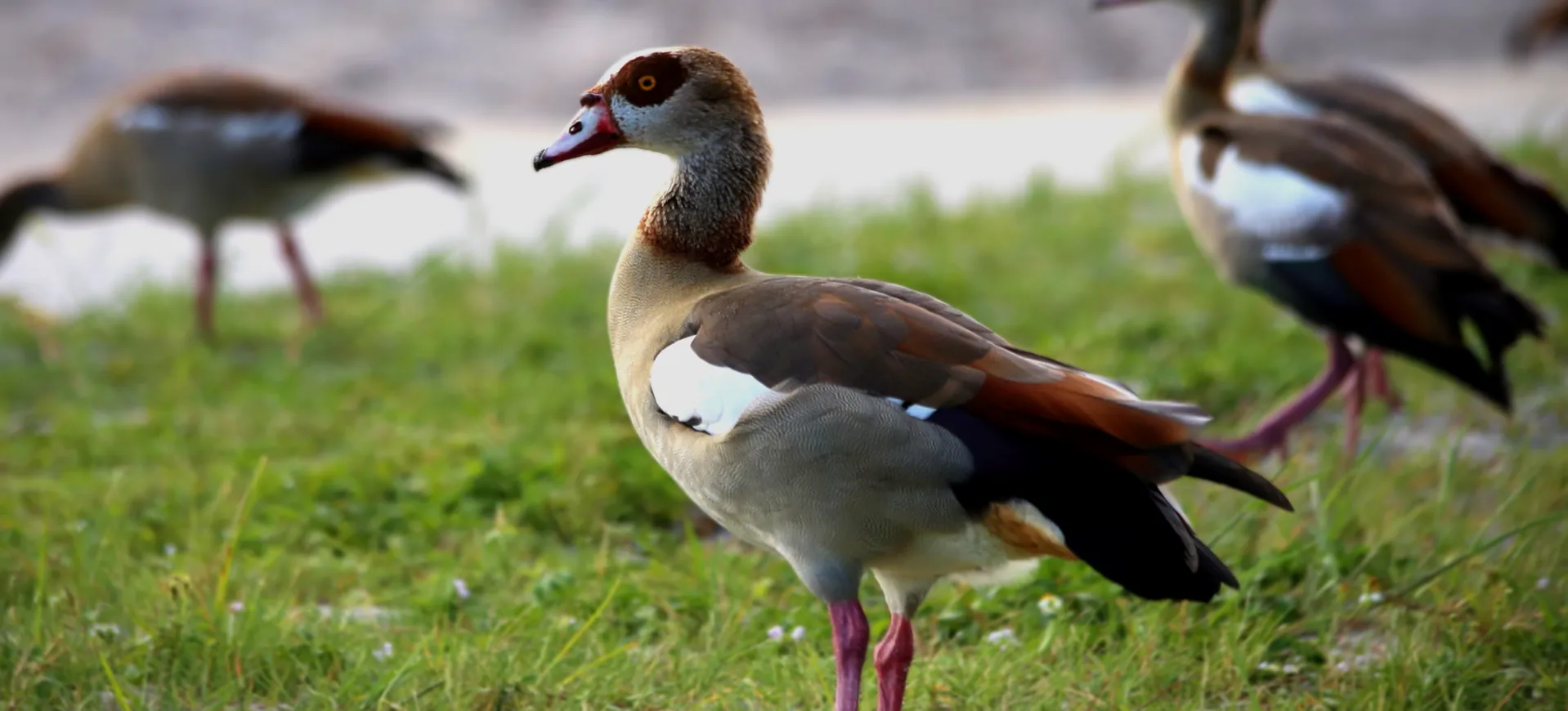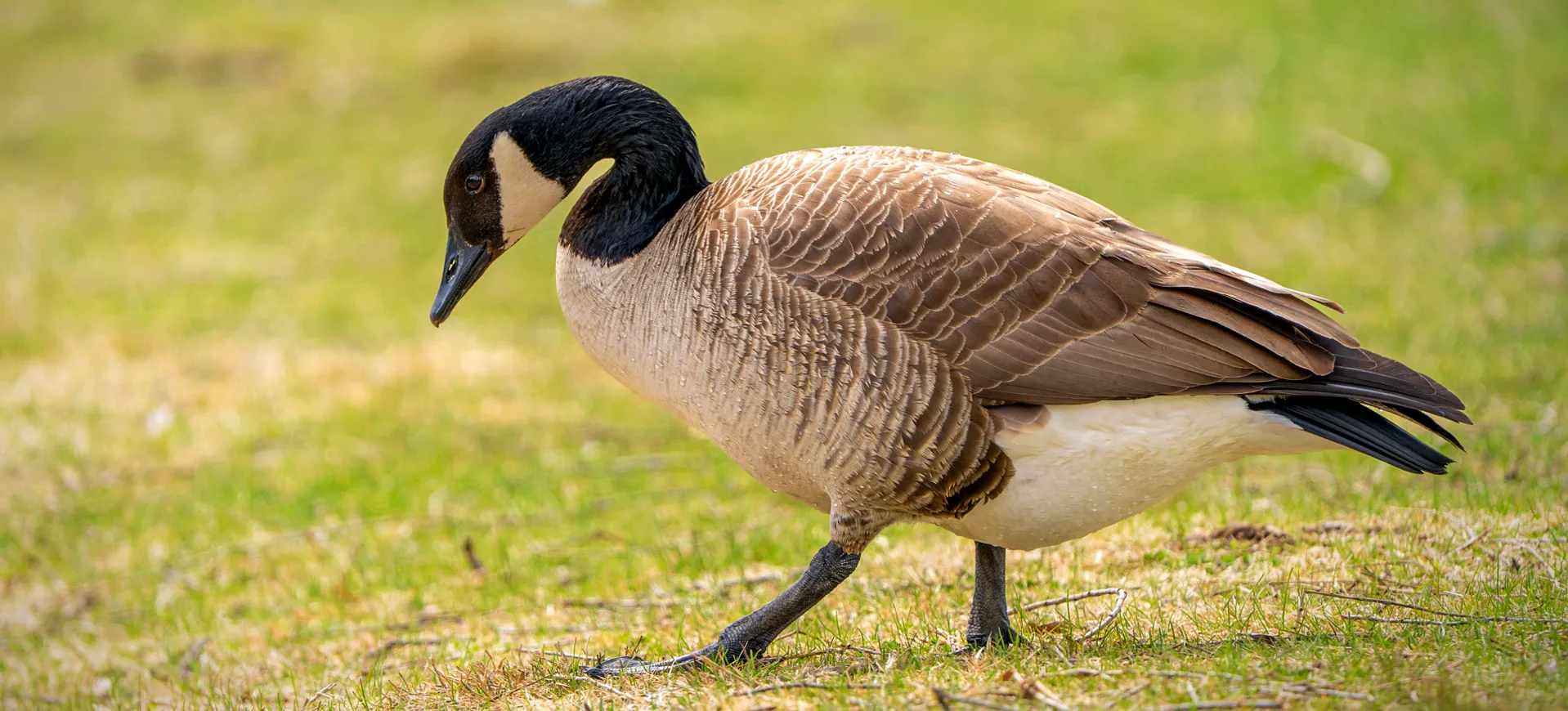Overview
The Maccoa Duck (Oxyura maccoa) is a distinctive bird in Eastern and Southern Africa. It belongs to the family Anatidae and is known for its unique diving abilities, setting it apart from many other duck species. Males are particularly striking with their chestnut bodies, blackheads, and bright blue bills during the breeding season, while females and non-breeding males are more subdued in coloration. This species prefers freshwater lakes and is often seen diving for food, submerging for considerable periods.
Maccoa Ducks are relatively small and compact, with a body shape adapted for efficient diving. They feed primarily on aquatic invertebrates and some plant material, foraging underwater. The bird’s habitat is threatened by environmental changes, particularly the loss and degradation of wetlands. Conservation efforts are essential to ensure the survival of this species, whose populations are facing challenges due to habitat loss.
These ducks are generally quiet and elusive, making them challenging to observe in the wild. They are most active during dawn and dusk, exhibiting crepuscular behavior. The Maccoa Duck is not known for long-distance migration but may move locally in response to water levels and food availability. Their presence in a wetland is often an indicator of a healthy aquatic ecosystem.
Taxonomy
Kingdom
Phylum
Class
Order
Family
Genus
Species
Type
Physical Description:
The Maccoa Duck exhibits a notable sexual dimorphism in its physical appearance. Males during the breeding season have a distinctive look with a chestnut body, a black head, and a bright blue bill, while non-breeding males and females display a more subdued color palette, primarily brown and gray. The species is characterized by its stout body, short wings, and a stiff tail often held erect. Their legs are set back on their bodies, aiding in their excellent diving ability but making them somewhat awkward on land.
Measuring around 15 to 18 inches in length, Maccoa Ducks are small to medium-sized waterfowl. They have a compact and robust build, adapted for an aquatic lifestyle. The body is streamlined for efficient diving, a trait essential for their foraging habits. Their plumage is dense and waterproof, a critical feature for a bird that spends much of its time submerged.

Lifespan: Wild: ~7 Years || Captivity: ~10 Years

Weight: Male: 1.3-1.5 lbs (600-700 g) || Female: 1.2-1.4 lbs (550-650 g)

Length: Male & Female: 15-18 inches (38-45 cm)
Characteristic:
Native Habitat:
Maccoa Ducks inhabit freshwater lakes, ponds, and reservoirs, with a preference for shallow, well-vegetated waters. These habitats provide the food resources and shelter necessary for survival. The birds are primarily found at altitudes between 1,500 and 2,500 meters, although they have been recorded at lower and higher elevations. The availability of suitable nesting sites and food sources influences their habitat choice.
These ducks adapt to various water bodies as long as the conditions are favorable for foraging and breeding. They require areas with dense vegetation both for cover and nesting. Maccoa Ducks are sensitive to changes in their habitat, particularly those that affect water quality and food availability. Habitat degradation, including pollution and the draining of wetlands, poses a significant threat to their populations.
Biomes:
Biogeographical Realms:
Continents:
Diet:
Diet & Feeding Habits:
Maccoa Ducks are specialized feeders, primarily consuming aquatic invertebrates such as insects, crustaceans, and mollusks. They dive to obtain food, using their strong legs to propel themselves underwater. This duck species can stay submerged significantly, often disappearing under the water for up to 30 seconds. Their diet may include aquatic plants and seeds, particularly when animal prey is less abundant.
Feeding mainly occurs during dawn and dusk, aligning with their crepuscular activity patterns. Maccoa Ducks forage in shallow waters, typically less than 6.6 feet (2 meters) deep. They use their serrated bills to grasp and filter prey. The diet and feeding behavior of Maccoa Ducks are crucial for maintaining the balance in their aquatic habitats, as they help control populations of aquatic invertebrates.
Mating Behavior:
Mating Description:
Maccoa Ducks have a polygamous mating system, where males mate with multiple females during the breeding season. The breeding season varies depending on the geographical location but generally occurs during periods of abundant food and favorable environmental conditions. Males display elaborate courtship behaviors, including distinctive calls and physical displays to attract females. These behaviors are most pronounced during the breeding season when males exhibit their brightest plumage.
Nesting sites are typically located in dense vegetation near or on the water, protecting the eggs and young. Females are responsible for nest building, egg incubation, and duckling care. The nests are constructed from plant material and are well hidden. The female usually lays between 6 to 10 eggs per clutch, and the incubation lasts about 26 to 28 days.
Reproduction Season:
Birth Type:
Pregnancy Duration:
Female Name:
Male Name:
Baby Name:
Social Structure Description:
Maccoa Ducks are generally solitary or found in small groups, especially outside the breeding season. They do not form large flocks like some other duck species. During the breeding season, males establish territories that they defend aggressively against other males. These territories are used primarily for mating and are not maintained year-round.
Social interactions among Maccoa Ducks are most notable during the breeding season. Females are typically more reclusive, especially when nesting or caring for their young. Ducklings stay with their mother for several weeks until they can fend for themselves. Outside the breeding season, Maccoa ducks may gather in mixed-species groups, especially in areas with abundant food.
Groups:
Conservation Status:
Population Trend:
The Maccoa Duck population in the wild is experiencing a gradual decline, primarily due to habitat loss and degradation. Wetland drainage for agriculture, urban development, and water pollution are significant factors affecting their natural habitats. In some regions, their numbers have decreased sharply, making them a species of conservation concern. Accurate population estimates are challenging due to their elusive nature and the inaccessibility of some of their habitats.
Conservationists are concerned about the long-term viability of the Maccoa Duck populations. This decline is particularly noticeable in regions where wetland destruction is most prevalent. In areas where conservation efforts have been implemented, there have been some signs of population stabilization. However, the overall trend remains negative, emphasizing the need for continued and enhanced conservation measures.
Population Threats:
Habitat loss is the primary threat facing Maccoa Ducks. Wetland drainage for agriculture, urban development, and changes in land use have led to the loss of significant portions of their natural habitat. Water pollution, including agricultural runoff, industrial waste, and sewage, further degrades these environments, impacting the ducks’ food sources and nesting areas.
Additionally, climate change poses a long-term threat by altering wetland ecosystems. Changes in rainfall patterns and increased temperatures can affect the availability of suitable habitats. In some areas, invasive plant species have altered the natural vegetation of wetlands, impacting the availability of suitable nesting sites and food resources for the Maccoa Duck.
Conservation Efforts:
Conservation efforts for the Maccoa Duck include habitat protection and restoration initiatives. Efforts to safeguard and restore wetlands are crucial for the survival of this species. Protected areas and nature reserves play a vital role in providing safe habitats free from human development pressures.
Environmental awareness and education programs are also important in conserving Maccoa Duck populations. These programs aim to inform local communities about the importance of wetlands and the species that depend on them. There are also efforts to monitor populations and understand their ecology better, which is essential for developing effective conservation strategies.
Additional Resources:
Fun Facts
- Maccoa Ducks are one of the few duck species capable of diving and swimming underwater.
- The bright blue bill of the male during the breeding season is a distinctive feature among ducks.
- They are known to remain submerged for up to 30 seconds while foraging.
- Unlike many other ducks, Maccoa Ducks are not known for long-distance migrations.
- The species exhibits significant sexual dimorphism, with males and females having markedly different plumages.
- They are one of the few duck species where the male has no role in nest building or rearing the young.
- Maccoa ducks use their stiff tails for underwater propulsion, a unique adaptation among ducks.
- Their nests are often built in dense vegetation and are well-hidden to protect against predators.
- In some cultures, the Maccoa Duck symbolizes adaptability and resourcefulness due to its diving skills.
- Despite being waterfowl, Maccoa Ducks are relatively awkward and clumsy due to their leg position when walking on land.


















































































